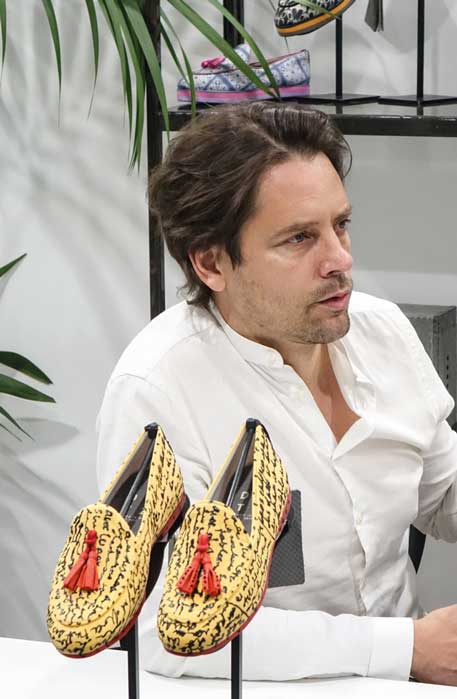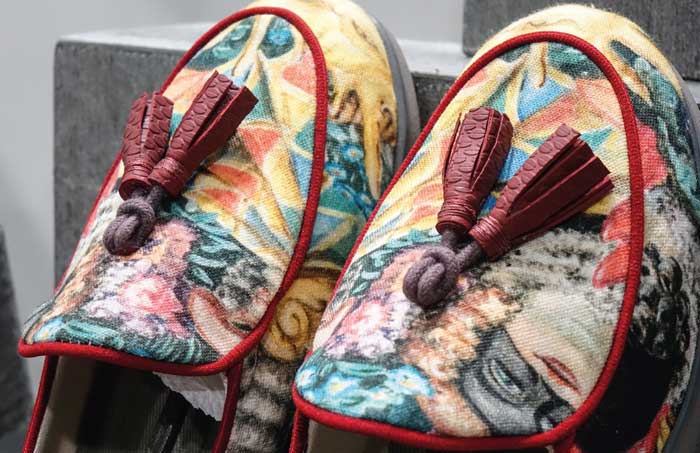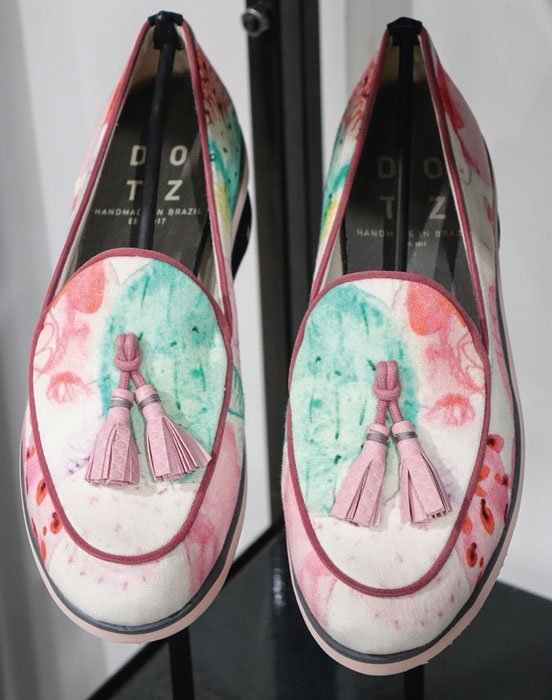
Dotz Sustainable beauty The Brazilian footwear brand fosters an alternative business pattern in which shoes are pieces of art made collectively, in full compliance with the ethical value of quality.
To connect people and ideas in order to create opportunities. To believe in a different way to do business. Rodrigo Doxandabarat, Argentinian entrepreneur, has described the Linking DOTZ project as an adventure, not only on a personal level, resulting in a product in perfect balance between aesthetics and sustainability. He can also count on the support of his partners – Anderson Presoto, Alvaro Oviedo and Juan Coates -, thus underlining, once again, the pivotal role played by cooperation in the success of this endeavor.

The Argentinian entrepreneur Rodrigo Doxandabarat
Rodrigo Doxandabarat, can you tell us something more about the project? The project is the crowning achievement of a life path, not only mine, but also of the several partners and collaborators involved, stemmed from a dream, from the desire to implement a different business ecosystem, a true, shared interaction where four cornerstones, that is, sustainability, collaboration, cooperation and management, meet (hence the term Linking) in balance, in order to create new opportunities and scenarios to explore.
What is the reason behind your choice to take on footwear production? This business idea is a compendium of my previous experiences in cooperation and in the fashion industry. A self-discovery journey from Spain to China when I was very young, the encounter in India with Mother Teresa of Calcutta in 1977, the participation in cooperation projects funded by the German brand Strenesse (in Iraq, during the second Gulf war in 2003, and then in the Argentinian slums), the collaboration with several Italian as well as French NGOs. And then the years spent working as a model and as sales and retail manager at Armani and Dolce&Gabbana. At a certain point, it was high time for me to link the dots (hence the name of the project), to manufacture something in line with my interests in cooperation, in sustainability, in fashion: shoes gave me the chance to work with my hands, to undertake a craft activity that could counterbalance my hectic life. I was intrigued by shoemaking, by its tools. I studied in order to become a footwear pattern-maker. However, shoes were not the ultimate goal, but a channel to effectively convey the project’s concept and fulfillment.
Let’s talk about the cornerstones of this project. We have kicked off the production of sustainable shoes that employs, as far as the upper is concerned, agro-ecological cotton, fully devoid of any toxic substance, proceeding from sustainable sources, grown in family-run farms and processed according to a very complex procedure in different Brazilian regions. We monitor the whole supply chain, from the seeds plantation to their separation from the fiber (ginning), from spinning to weaving in collaboration with farmers, members of cooperatives and local workforce who are part of the ecosystem. Soles, fussbetts and packaging (boxes and labels) are manufactured by recycling the remaining cotton, rubber scraps and household solid waste such as razors and toothbrushes. The sewing and assembly stages involve some destitute Brazilian women, to whom we have taught the required skills in partnership with the city of São Paulo. Three unisex models (alpargata, loafer and slipper) not bound to the concept of season, resulting in capsule collections customized by individual artists and other brands. As a matter of fact, the upper is a “canvas” that European and Latin American designers and artist can use to give free rein to their creativity. Each talent can take part in the crowdsourcing project, thus earning royalties on every pair of shoes sold featuring their design.
The project was launched four years ago and was presented at Pitti last June. What is the feedback you got? The main challenge lies in social production as well as in the fact that all the stakeholders belonging to the ecosystem are able to follow the growth of the project, so as to benefit from it. Now, after four years of hard work, the project is better organized, the product is well-defined. We attend the most prominent fashion exhibitions – Pitti, Who’s Next, TheOneMilano, Première Classe – and we sell the articles in the best stores (the models are available on the online platform as well) in Brazil, Argentina, France, Spain, Belgium, Turkey, Italy, Canada and the USA. There is utopia, there is philosophy behind the choices made, but the first aspect I put in the limelight whenever I am invited to universities to talk about Linking DOTZ is that it is, first and foremost, a business. For a project to be sustainable and for the ecosystem to function, both sourcing and sales must find a balance. Sustainability and profitability can go hand in hand. To invest in sustainable production techniques should not go to the detriment of gain. That’s why we believe that, inside the ecosystem, even the aesthetic component plays a pivotal role. We do not aim at selling sustainability or veganism, but a beautiful product, featuring a Brazilian touch, at a competitive price. With everything that follows. www.linkingdotz.com


